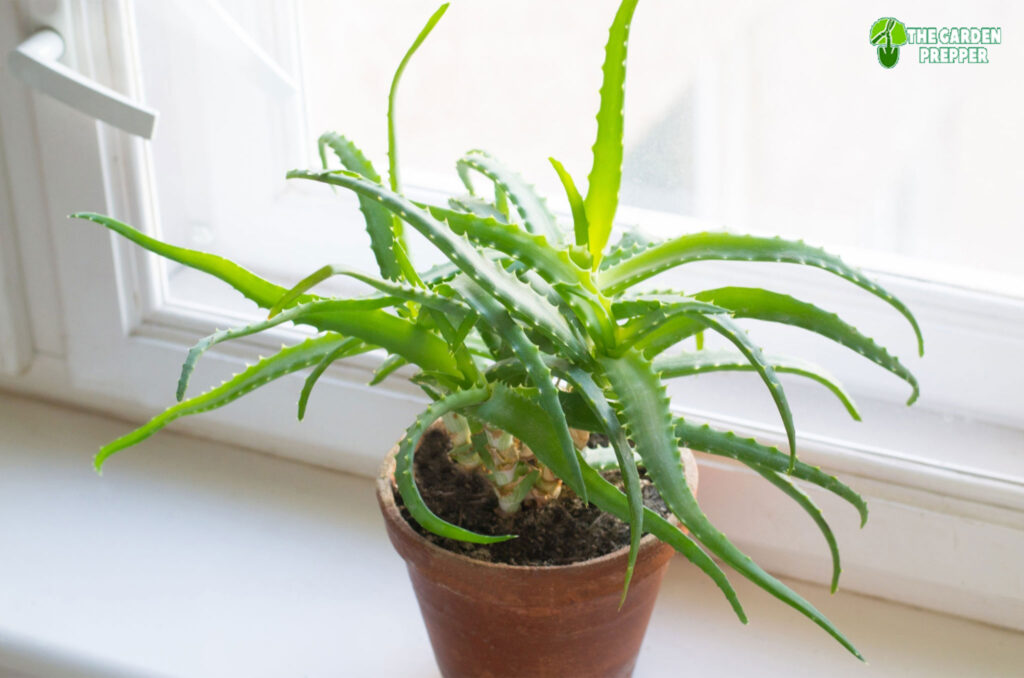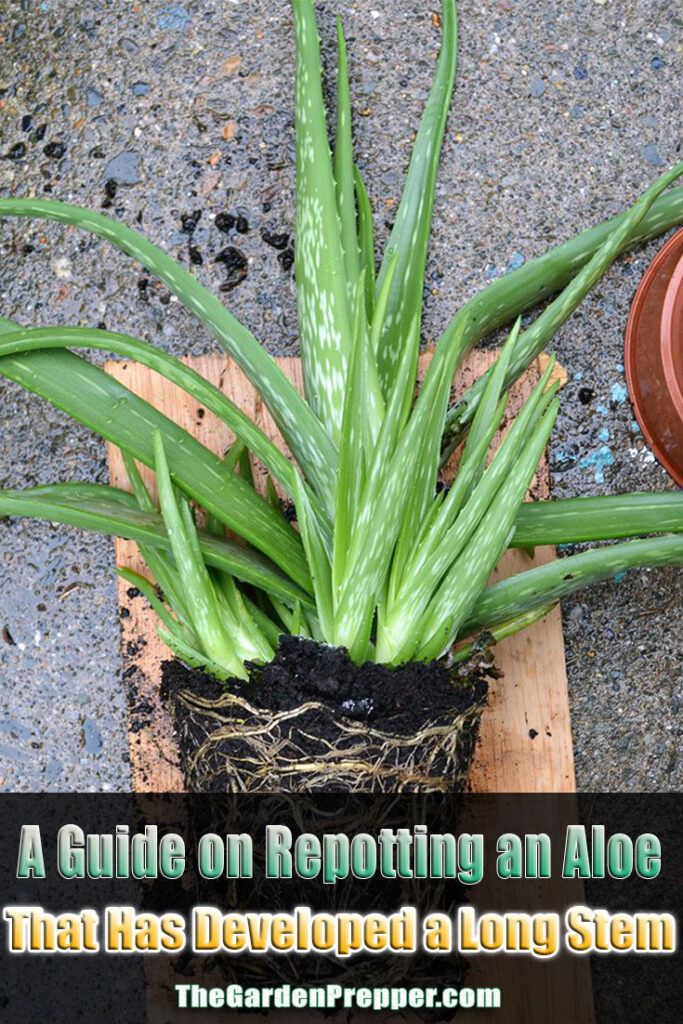Aloe vera plants make great additions to any garden. They are succulents that thrive well outdoors in flowerbeds and rockeries, though they grow well indoors, too. This plant is very popular for the many health benefits and medicinal uses it offers, thanks to the potent anti-inflammatory properties it has.
You can use both the flesh and juice of the leaves as cooling gels or topical anesthetic, treating sunburns and the like. The gel also makes a good addition to one’s skincare routine, and it looks great in gardens.
If you are caring for an aloe vera plant or two, you may have come across this article because you found out it’s developed a long stem. How can you repot this safely, whether indoors or outdoors? Read on to find out!

Repotting an Aloe That Has Developed a Long Stem
You will know that your aloe vera has a long and heavy stem if it begins tipping over. If ever it is too heavy, then giving it support to keep it straight won’t work anymore, and it would be time to repot it to a bigger pot, or outside the garden.
However, repotting aloe vera with long stems poses a risk of damaging your plant, which is why you will need to follow a method that is less disturbing to the roots of your plant. Fortunately, you don’t need to throw the overgrown plant away!
Here are 3 methods you can follow:
1. Repot It Deeper
The best and easy way to repot your aloe vera is to use a deeper pot, add composted manure, then repot your aloe vera. This deeper pot can accommodate the longer length of your plant’s stem.
Just make sure that you fill the deeper pot using a well-drained soil and bury the stem with soil, until its first 2-3 leaves. The length depends on the plant. You may also cut off a few leaves below so you can bury the plant’s stem deeper in your pot.
2. Repotting Long Stems
If you have an extremely long stem, then this method is the best one. Simply follow these steps:
- Prepare a plastic container and create a big, round hole at the base of it for drainage. The hole needs to be larger than your plant’s stem.
- Cut open or slit the plastic container from the side to bottom of its hole. Make smaller holes at the side where you cut open your container so you can thread and seal the container after repotting.
- Wrap the container around your long-stemmed plant. Fit the container on top of the step, around the middle, letting it sit on top like it’s hanging. Thread upwards with the smaller holes for the container to hold the soil better.
- Fill your container with planting matter or soil, then water it. Nurture your plant for about a month until it has grown roots that can support your upper plant.
- After the plant has developed the appropriate roots, you can now cut it and remove the pot, putting it in an excellent area where aloe vera plants can grow properly.
3. Cut It and Repot!
Another option is to cut the long stem carefully then repot your plant. You just need a sharp and sterilized knife, along with gentle hands to prevent damaging the plant.
Before you repot the plant, let the cut area dry out first to remove the risk of rotting, as succulents would rot if exposed to wet conditions before their wounds have healed. Also, cut away and remove the 2-3 lowest leaves to give the necessary space to bury your plant. If you don’t cut away these leaves and bury them in the soil, they’ll rot.
After repotting, do NOT water the plant right away. Instead, wait for a few days before watering, letting it settle in the new container. Doing this will help your plant recover from the stress and transplant shock better.
Take note that these methods are better used for repotting aloe vera plants with long stems. Trimming the stem isn’t always necessary for aloe vera plants with normal-sized stems, and if you have to cut it back, you’ll need to leave as much of the plant’s stem as you can!
Wrapping it Up
It’s important to know how to repot your aloe vera plant to prevent damaging or killing it. If it has a longer stem than it should, there are ways you can repot it safely, and as long as you follow the right steps, you won’t have any problem moving it to wherever it needs to be.
Hopefully, you found insight in this quick guide on how to repot aloe vera plants with long stems. If you’re facing this problem, remember these methods and repot it the right way now. Good luck!
